| کد مقاله | کد نشریه | سال انتشار | مقاله انگلیسی | نسخه تمام متن |
|---|---|---|---|---|
| 2011331 | 1067004 | 2013 | 15 صفحه PDF | دانلود رایگان |

Epilepsy is a common neurological disease but the mechanism of seizure generation has been only partially unraveled. Furthermore, almost 30% of epileptic patients are resistant to pharmacological treatment. Therefore, elucidation of the basic mechanism of seizures and search for new antiepileptics in order to treat the drug-resistant form of epilepsy and to improve the efficacy of current therapies seem justified. The aim of this overview is a brief presentation of some new concepts and research directions in pathogenesis and pharmacotherapy of epilepsy. Development of ideas on the mechanisms of seizures and antiepileptic drugs reflects the progress in our understanding of the central nervous system physiology, particularly of neurotransmission. Hyperactivity of excitatory amino acid systems, insufficient GABAA receptor-mediated neurotransmission, and disturbances in intrinsic properties of neuronal membranes are still regarded as the most important mechanisms of seizures. New data add to the complexity of GABA-glutamate interaction showing both excitatory and inhibitory role of GABA and glutamatergic neurons in the central nervous system. Moreover, besides synaptic NMDA and GABAA receptors, also extrasynaptic receptors for the amino acid transmitters have been recently implicated in the pathomechanism of epilepsy. Changes in expression, polymorphisms, lost- or gain-function mutations as well as cellular energetic imbalance can contribute to the disturbed function of the ligand- and voltage-dependent sodium, potassium, chloride and calcium channels, resulting in epileptiform activity. Voltage-dependent sodium and calcium channel blockers, and GABA mimetics are the most clinically useful groups of antiepileptic drugs and the newest research in this field is focused on more selective and subtle regulations of their molecular targets. Of interest is an emerging role of extrasynaptic GABAA receptors, various kinds of potassium ion channels, hyperpolarization-activated cyclic nucleotide gated (HCN) channels, acid-sensing ion channels, and gap junctions in the regulation of neuronal excitability and seizures. Iono- and metabotropic glutamate receptors used to be viewed as an attractive target for new anticonvulsants, however, opinions are now less enthusiastic, since their competitive and non-competitive antagonists possess undesired side effects. Positive or negative allosteric modulators of glutamate receptors with fewer side-effects can be more promising. The introduction of new compounds acting through novel pharmacological mechanisms gives hope that the proportion of patients with uncontrolled epilepsy will substantially decrease. However, this may be possible if molecular background of the pharmacoresistance in epilepsy is deciphered.
Journal: Pharmacological Reports - Volume 65, Issue 4, July–August 2013, Pages 787–801